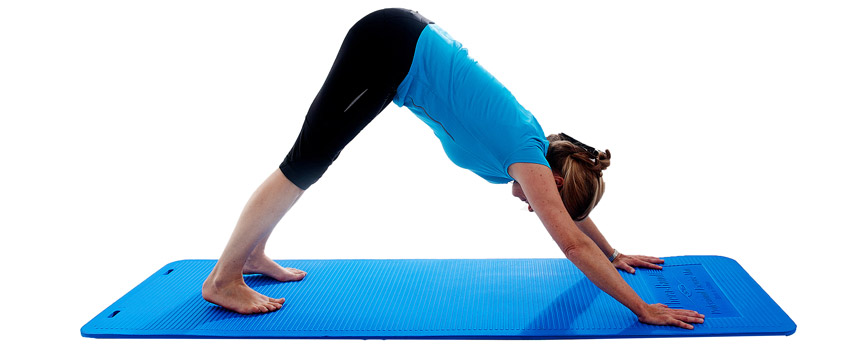
5 Exercises You Can Do At Home
Everyone faces time constraints. It’s not possible for everyone to hit the gym regularly for workouts. However, it’s still possible to stay in shape and remain fit. There is a set of certain exercises which if done regularly, can help you to enhance your physique and remain in shape.
Given below are a few exercises that you can do in the comfort of your home. These exercises are quite simple and easy to do. In case if you experience any discomfort while performing these exercises, DISCONTINUE immediately.
1) Push-ups: A great way to enhance and tone your arms, chest and shoulders. Find the steps below to do push-ups in an appropriate way.
– Step 1: Bend down to a hands and knees position on the mat. Keep your hands directly under your shoulders. The fingers should be facing forward and knees should be under your hips.
– Step 2: Keep one leg out and away followed by the other leg. This will bring you to a plank position. Keep the abdominal engaged to brace the torso. Your head should in alignment with your spine. Make sure your feet are together with your toes tucked under your heels reaching towards the wall behind you.
– Step 3: Bend your elbows slowly, lowering your body towards the floor. Make sure you keep the torso rigid and head in alignment with your spine. Do not allow your lower back or ribcage to sag or your hips to hike upwards. Now, try to lower yourself until your chest or chin touches the mat on the floor. Make sure your elbows should stay close to the sides of your body or are allowed to flare outwards slightly.
– Step 4: Press your arms upwards, straightening your elbows. Keep the torso rigid and head in alignment with your spine yet again. Now imagine pushing the floor away from you. Do not allow your lower back to sag or your hips to hike upwards again.
– Step 5: Alternatively, keep your fingers forward and your elbows close to your sides while doing the downwards phase. This shifts the emphasis from the chest muscles on the triceps and might reduce the stress in shoulder joint. When you push through the outside surface and heel of your palm, it provides great force in your press and brings stability to your shoulders.
Do three sets of push-ups 15 times. Set up a routine for it. You can either do it daily, on alternate days or thrice a week.
2) Squat Jumps: This exercise will help you in burning a lot of calories and strengthening your quad muscles. Find the steps below to do squat jumps appropriately.
– Step 1: Upward Phase: Stand with your feet and hips width apart. Keep your arms by your side. Pull your shoulder blades down and connect your abdominal muscles to support your spine.
– Step 2: Downward Phase: Move your hips back and down. This will create a pivot movement at your knees. Now lower yourself until you feel your heels are about to lift off the floor. Try to keep a flat back by bending forwards at the hips. Keep your head directly facing forwards and position your arms where they offer the greatest degree of a balancing support.
– Step 3: Jumping Movement: Take a very brief pause at the bottom of your downward phase. Jump up through your lower body, fully extending your hips, knees and ankles. Make sure to keep your feet in level with each other and parallel with the floor as you jump in the air.
– Step 4: Landing: One of the most crucial components of the landing phase is proper foot position and avoiding extreme forward movement in your lower limit. This will only place an additional stress on your knees.
– Step 5: Make an attempt to land softly and quietly on the mid-foot while rolling into the heels. Make sure to push your hips back always and down to absorb the impact of landing. Remember not to lock out your knees while landing.
– Step 6: Make sure you land with your trunk slightly forward. Your head should be aligned with your spine and back should be flat. Keep your core muscles engaged, bracing your torso to protect your spine.
– Step 7: Variation: As you develop your jumping and landing skills, you can increase the intensity in your exercise and complexity by driving your arms behind you during the downward phase.
We would like to suggest you first learn how to squat and land before trying to jump. Once you master the hip-hinge mechanism, you can start off with small jumps but make sure you put a strong emphasis on your landing mechanics. Progress to more aggressive jumps only when you have mastered your landing mechanics.
3) Forward Lunge: This exercise will keep your back and abs in shape. Find the steps below to do the forward lunge appropriately.
– Step 1: Starting Position: Lie down on your stomach on an exercise mat. Put your elbows close to your sides and directly under your shoulders. Palms should be down with fingers facing forwards. Engage your core muscles. You should feel as if you are tightening a corset around your ribs, waist and lower torso. Contract your thigh muscles to straighten your legs strongly and flex your ankles slowly.
– Step 2: Upward Phase: Slowly but steadily lift your torso and thighs off the floor or mat. Keep your torso and legs rigid. Do not allow any sagging to develop in your ribcage or lower back. Avoid hiking your hips into the air or bending your knees. Keep your shoulders away from your ears. The shoulders should be directly over your elbows with your palms facing downwards throughout the exercise. Continue breathing; keep your abdominals strong while holding onto this position. Try to hold on to this position for 5 seconds or more.
– Step 3: Downward Phase: Keep your torso and legs stiff as you slowly and gently lower your body back towards the mat or floor. During this movement, if you experience any movement, stop your exercise immediately and consult your physician.
4) Front Plank: This exercise is aimed at strengthening your abs and back. Find the steps below to do the front plank appropriately.
– Step 1: Starting Position: Lie down on your stomach on an exercise mat. Keep your elbows close to your sides and directly under your shoulders. Keep your palms down and fingers facing forwards. Engage your core muscles. You should feel as if you are tightening a corset around your ribs, waist and lower torso. Contract your thigh muscles and straighten your legs strongly and flex your ankles.
– Step 2: Upward Phase: Lift your torso slowly and thighs off the mat. Keep your torso and legs rigid. Make sure that you don’t allow any sagging in your ribcage or lower back. Avoid hiking your hips in the air or bending your knees. Keep your shoulders away from your ears. The shoulders should be directly above your elbows with your palms facing downwards throughout the exercise. Keep breathing; keep the abdominals strong while holding onto this position. Try holding onto this position for 5 seconds or more.
– Step 3: Downward Phase: Keep your torso and legs stiff as you slowly and gently lower your body towards the mat or the floor. Immediately stop the exercise if you experience any pain in the lower back with this movement. Consult your doctor for more details.
5) Supine Reverse Crunches: This exercise is aimed at strengthening your abs. Find the steps below to do the supine reverse crunches appropriately.
– Step 1: Starting Position: Lie down on your back on the mat with your knees bent flat on the floor and arms spread out on your sides. Your palms should be facing down. Start exhaling gently. Engage your core muscles to support your spine. Lift your feet off the floor slowly, raising your knees directly above your hips. Bend your knees up to 90 degrees. Hold on to this position and breathe normally. Use your arms to support yourself.
– Step 2: Upward Phase: Exhale slowly and raise your hips off the mat. Roll your spine upwards as if trying to bring your knees towards your head. Avoid changing the angle of your knees during the roll-up. Use your hands to support you while maintaining your balance and continue to curl-up until your spine cannot roll any further. Hold on to this position briefly.
– Step 3: Downward Phase: Inhale gently and slowly. Lower your spine with control and hips back to the start position. Proper form is important while performing this exercise to prevent excessive stress on your lower back. Return to your start position during the repetitions while controlling your leg movement. Do not allow your knees to move past your hips. Return to a direct position above your hips.
We hope you find these exercises beneficial and perform the regularly for a healthy and fitter body.
At Fitness World, it is our endeavor to provide you not just with world-class fitness equipment but high quality fitness tips as well. Contact us in case you have any queries.
We will be more than happy to help you.


